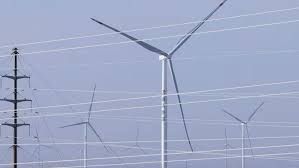How China’s green energy strategy can inspire Bangladesh
- Update Time : Friday, March 28, 2025

—Naziba Basher—
China has emerged as a global leader in the green energy sector, making significant strides in transitioning to renewable and sustainable energy sources. This is a crucial part of China’s environmental goals and commitment to achieving carbon neutrality by 2060.
Over the past decade, the country has invested heavily in green technologies, such as solar, wind and hydropower, while reducing its reliance on coal. In 2024, China became home to the world’s largest solar and wind energy capacities as well as the largest electric vehicle market.
Additionally, it is a major player in the manufacturing of solar panels, wind turbines, and energy storage systems. China’s leadership in addressing domestic environmental challenges is positioning the country as a key influence in global environmental policies and technologies.
A central strategy behind the success in green energy is aggressive investment in renewable energy infrastructure. For example, tax breaks and low-interest loans for solar and wind energy companies have spurred innovation and growth. Alongside investments in energy production, China has developed an extensive electric vehicle network to reduce emissions from transportation, one of the largest sources of pollution in the country.
Sichuan Shudao Equipment and Technology Co, a leading company in the renewable energy sector, has made significant strides in promoting green technology, especially in wind and solar energy. The company develops and manufactures advanced equipment for clean energy generation. Its expertise in wind turbine production and solar panel efficiency has positioned it as a prominent player in China’s green energy transition, contributing to the country’s goal of reducing carbon emissions.
Sichuan Shudao excels in the development of high-efficiency wind turbines, with innovations that increase energy output and lower operational costs, making wind energy more competitive. Its turbines are designed for both onshore and offshore applications, expanding the potential for wind power generation. This technology could also serve as a valuable model for Bangladesh, as we are looking to diversify the energy mix and reduce our environmental footprint.
The company has also advanced solar energy solutions by developing high-performance solar panels using innovative materials and production techniques. These are now deployed in large-scale projects, including solar farms that power entire regions.
Sichuan Shudao is also exploring energy storage solutions to ensure solar energy availability even when sunlight is scarce. This combined focus on generation and storage is key to creating a reliable renewable energy supply.
For countries like Bangladesh, which experience high sunlight levels but face energy access challenges, taking a leaf out of Sichuan Shudao’s book on solar technologies could be crucial in meeting the growing demand for clean energy.
With deteriorating environmental conditions, China’s green energy methods could provide significant guidance to Bangladesh, which has long struggled with poor air quality, particularly in Dhaka, where pollution levels rank among the worst in the world. This has caused public health issues, including respiratory diseases, cardiovascular problems, and premature deaths.
Additionally, Bangladesh’s reliance on coal and fossil fuels significantly contributes to its carbon footprint. Shifting to renewable energy could reduce pollution and decrease dependence on fossil fuels. By taking inspiration from China’s green energy strategies, Bangladesh could design measures to reduce its reliance on coal and natural gas. With abundant sunlight and wind resources, the country has the potential to harness these renewable sources.
China’s model of incentivising renewable energy infrastructure development could be replicated in Bangladesh, encouraging private and public sector investment. Offering tax incentives for solar panel installation or wind farm development could promote the widespread adoption of these clean energy sources. By investing in energy storage, Bangladesh could ensure renewable energy availability even during low-production periods. Shifting towards green energy would significantly improve air quality, with a reduction in coal-fired power plants and the widespread adoption of electric vehicles.
Furthermore, Bangladesh could learn from China’s “green manufacturing” initiatives, where industries are retrofitted with energy-efficient technologies to reduce emissions.
In short, China’s leadership in green energy offers a model that Bangladesh could follow to address its air quality issues. By investing in renewable energy, energy storage, and green technologies, Bangladesh could reduce its environmental footprint, improve public health, and build a sustainable energy future. Through targeted policies, incentives, and long-term investments, Bangladesh could not only address air quality problems but also contribute to global climate change efforts.



















